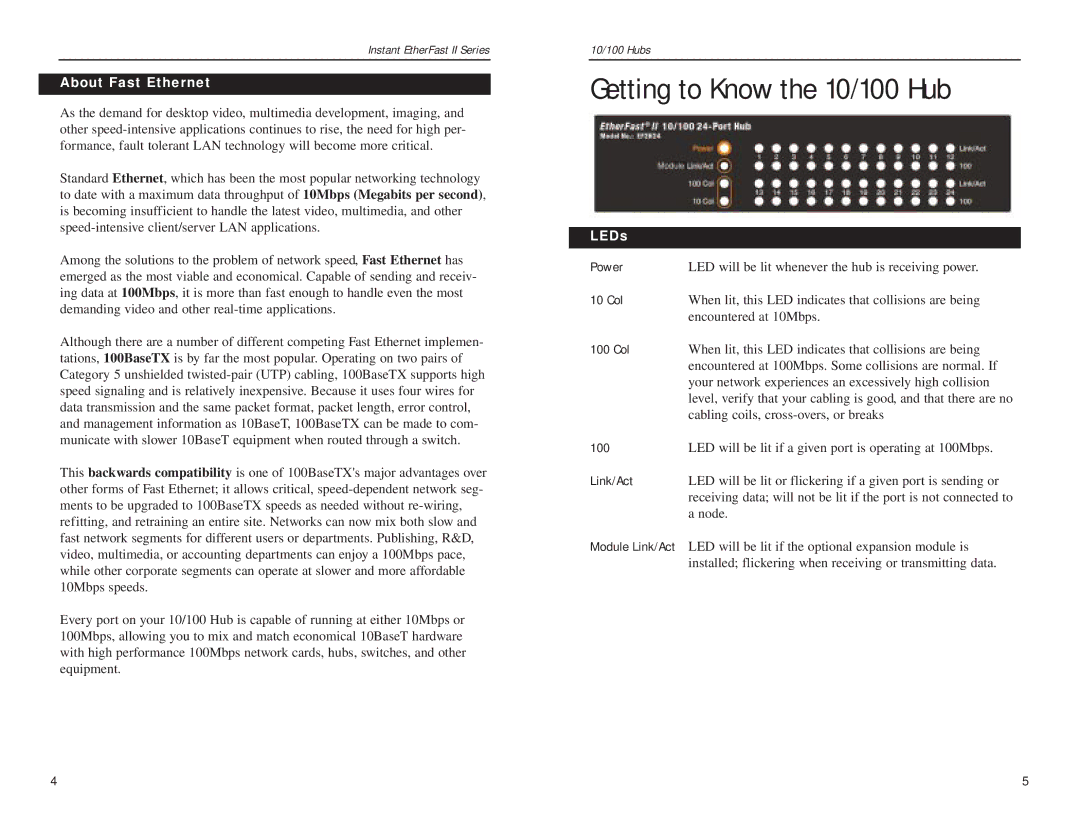
Instant EtherFast II Series
About Fast Ethernet
As the demand for desktop video, multimedia development, imaging, and other
Standard Ethernet, which has been the most popular networking technology to date with a maximum data throughput of 10Mbps (Megabits per second), is becoming insufficient to handle the latest video, multimedia, and other
Among the solutions to the problem of network speed, Fast Ethernet has emerged as the most viable and economical. Capable of sending and receiv- ing data at 100Mbps, it is more than fast enough to handle even the most demanding video and other
Although there are a number of different competing Fast Ethernet implemen- tations, 100BaseTX is by far the most popular. Operating on two pairs of Category 5 unshielded
This backwards compatibility is one of 100BaseTX's major advantages over other forms of Fast Ethernet; it allows critical,
Every port on your 10/100 Hub is capable of running at either 10Mbps or 100Mbps, allowing you to mix and match economical 10BaseT hardware with high performance 100Mbps network cards, hubs, switches, and other equipment.
10/100 Hubs
Getting to Know the 10/100 Hub
LEDs |
|
Power | LED will be lit whenever the hub is receiving power. |
10 Col | When lit, this LED indicates that collisions are being |
| encountered at 10Mbps. |
100 Col | When lit, this LED indicates that collisions are being |
| encountered at 100Mbps. Some collisions are normal. If |
| your network experiences an excessively high collision |
| level, verify that your cabling is good, and that there are no |
| cabling coils, |
100LED will be lit if a given port is operating at 100Mbps.
Link/Act | LED will be lit or flickering if a given port is sending or |
| receiving data; will not be lit if the port is not connected to |
| a node. |
Module Link/Act | LED will be lit if the optional expansion module is |
| installed; flickering when receiving or transmitting data. |
4 | 5 |
